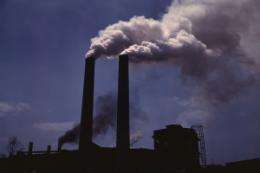Pollution figures put Europe under spotlight

European policy makers must collaborate more closely in the fight against global warming, according to a leading expert who compiled the most detailed ever record of greenhouse gas emissions across the continent.
The 18 regions from 13 countries who took part in the project led by Dr Sebastian Carney from The University of Manchester were revealed to be responsible for 11.5 per cent of the EU’s emissions.
Carbon dioxide released by human activity is the largest contributor to the human component of global warming.
Five of the regions had higher per capita emissions than their national averages - explained, according to Dr Carney, by higher concentrations of industry.
However, the emissions of Naples, Oslo and Stockholm were less than half of their national totals. The other regions in the study - including Glasgow - also showed lower emissions than their country’s average.
The lowest emission levels are explained, according to Dr Carney, by the use of biomass energy in Oslo and in Stockholm. Low levels of economic activity contributed to the figure in Naples.
The greenhouse gas inventories were recently compiled by regional leaders in local government, energy, transport and housing industries - among others - using a new method pioneered by Dr Carney at the University.
The method has also been used in the United States and Dr Carney will also be showing the technology to leaders in the China later in the year.
The green house gas emissions data across the partner regions showed that energy accounted for 87 per cent of the total emissions figure, industrial processes 6 per cent, waste 2 per cent and agriculture 5 per cent.
Landfill is the more greenhouse gas intensive form of waste treatment, followed by incineration and then recycling.
Farmyard animals, treatment of their waste and quantities of fertilisers applied to the soil also were found to have an important effect.
Dr Carney, who is based at the University’s Centre for Urban Regional Ecology said: “Notwithstanding the fact that these figures do not take into account emissions associated with goods and services produced outside the regions - in places such as India and China - these figures are of major importance.
“They show in stark terms the differences between partner regions and the activities that drive them allowing us for the first time to compare their emissions using consistent methodology.
“It’s clear that if we are to mitigate climate change, then we require substantial cuts in emissions: we must consider how and where the energy services we rely on are produced and avoid displacing the activity in one region for another.
“This data should not be used to view a region as good or bad: the key issue is to consider the activity which causes these emissions in each region, to see how they can be mitigated and by regions working together to learn from each other.”
He added: “There’s no question of a league table: a region, for example, may have very different forms of industry and a historically different energy system.
“So we need to change together, rather than single out regions and possibly discourage them from collaboration: we must recognise that some regions have greater potential for mitigation than others, over differing timeframes.
“Collaboration is key.
”The amount of CO2 released varied between partners, and depended on the nature and type of energy mix and industry, the manner in which waste is treated and the size of the agricultural sector.
“On the other hand, another region may have high emissions but provide a range of goods and services to others: Rotterdam is an example of this as it has a series of Petroleum refineries.”
Provided by University of Manchester (news : web)














